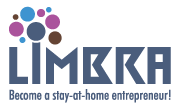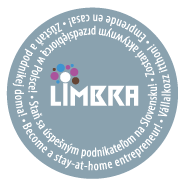Description
Globally the competency requirements of the global markets, companies and other business players
(against the employees) are significantly changing. The industry 4.0, the claim for shifting toward the
circular economy poses new challenges for the higher education. Today many professions do not
exist, which will be the top most wanted ones after 10 years. In most cases the most useful solution is
to develop the key competencies of the future employees which are the information technology, team
work, cooperation, logical thinking, communication and analytical skills.
WP4 aims to create the framework for new innovative education models. These models create strong
bonds between the educational process and the real needs (related to the former listed competences)
of the companies. The involvement of students and HEIs staff in the Multidisciplinary Real Life
Problem Solving projects (RLPS) allows direct contact with real work life environment and facilitate
gaining of new competences from practicerelevant project challenges. They have the opportunity to
gain new multidisciplinary and entrepreneurial thinking and skills in an international work
environment. All this enabling better compatibility with the new work life requirements.
WP4 includes implementations of 2 RLPS subprojects. The subprojects are implemented in four
rounds (phases). After the first round, the process is evaluated, and improvements are made to the
RLPS method. The second round of the process tests the improvements and suggests further
modifications if needed, etc. The third phase is the selection of students. The fourth round includes
the intensive contact week and the presentation.
The real life problem is an international product or service development project (related to RM sector)
in which the topic is given by the company. Both subproject involves 16 students, 48 staff member
from 4 different HEIs (4 different countries), and company representatives. Students form two
international teams, A and B, where there are representatives from each HEI. In team A there are 2
students from each four HEIs and in the same way in team B. The teams compete against each other
in solving the given problem. The process includes partly and totally virtual implementations. Partly
virtual implementation, implemented by teams A and B, consists of one intensive week at the hosting
HEI.
The intensive week contains tailored lectures given by company representatives and/or HEI experts
based on the needs and the topic of the project. In the end of the project the results are presented by
the teams and the company representatives choose the winner. The company has the rights to the
solutions and it may utilise the results of the project in its future products or services.
Task 4.1 – Preparation of subprojects
The planning of the implementation of the first round of the first subproject is started during the kickoff meeting of LIMBRA project (later in 2020 we will build on the experiences of the first subproject).
This first planning includes e.g. participating HEIs and plans for collecting real life problems from
companies. All HEI partners look up for companies, which are interested in taking part in the process
and collect suggestions for interesting and useful real life problems. After that, the partner HEIs
choose together companies and real life problems for the first round subproject. The Task 4.1 will be
repeated on the same way in 2020 as well.
Task 4.2 – Planning of projects
The RLPS method is applied for every subproject. The schedules and programmes of the intensive
week and virtual implementations are planned by participating HEIs and companies. HEI partners
search for experts to have the tailored lectures during the intensive week/virtual implementation. The
selection criteria of students are decided and agreed on together. The basic student selection criteria
are credit points, success in studies, working experience, language skills and motivation. In addition,
there may be project specific criteria, e.g. if the project topic relates to development of tractors then
farming experience could be beneficial. The feedback surveys for all participants are planned and
created. The Task 4.2 will be repeated on the same way in 2020 as well with regard the results of feedback surveys.
Task 4.3 – Selection of students
The information leaflet in English for student recruiting is created. The participating HEIs inform
appropriate student teams about the possibility to apply for the real life problem solving process. After
application, 4 students with multidisciplinary backgrounds are selected from each participating HEI
based on criteria agreed by partners (see task 4.2). All the applicants are informed about the
selection. Selected students form international and multidisciplinary teams A or B. From each HEI 2
selected students in team A, 2 students in team B. In each team there are together 8 students from 4
different HEIs. The Task 4.3 will be repeated on the same way in 2020 as well.
Task 4.4 – Implementation of the project
The implementation includes the own real life problems of the selected company and 2 international
multidisciplinary student teams (A and B) solving the problem. The firstround implementations are
run according to the developed process plans.
Each HEI provides 12 supervisors for students. One supervisor takes part in partially virtual
implementation and one supervisor in virtual implementation. Partially virtual implementation includes
one intensive contact week and independent working outside the intensive week.
During the intensive week, the teams of students have at first a kickoff meeting or virtual meeting in
the company whose problem they are solving, have tailored lectures for the project, make plans on
how to organize the work also outside the intensive week and have a lot of team work and
presentations. A week before the end of the process, the teams return their final reports. The
subproject finishes with a final seminar in the country of the involved company (students from other
countries take part through video conference). The tutor(s) of the company select(s) the winning
group and the supervisors of HEIs grade the teams (students). The time period of the subprojects is
36 months. During and after the subproject, feedback is collected and analysed. The electrical
feedback survey is done. The Task 4.4 will be repeated on the same way in 2020 as well.
Task 4.5 – creating RLPS implementation guide
After the second subproject the partner HEIs write a stepbystep guide of the RLPS model (using the
experience gained and the results of feedback surveys).
Duration
2019.03.01-2020.12.31.



